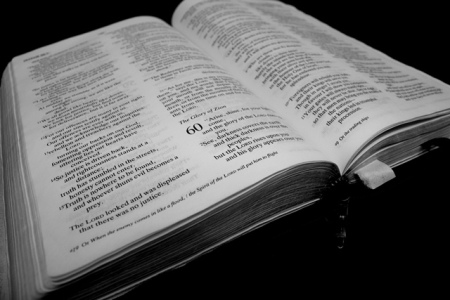The 4 corners of sermon prep

Everyone has their method for preparing a sermon. I’ve read books and talked with many pastors about their approaches to sermon prep and it varies greatly.
I’ve taken nuggets from many places and landed on a method of sermon prep that works well for me. If I had to name it, I’d call my method: “The Four Corners Method.”
I start my sermon prep by printing out the passage on a single blank sheet of paper. On each corner of the paper, I write the following headings.
Top Left Corner: Big Picture, Big Action, Big Inspiration
Top Right Corner: Verse Groupings
Bottom Right Corner: Illustrations
Bottom Left Corner: Applications
I start with the top right corner. I read through the text several times and find the natural breaks in the text. Each group of verses become their own point in my sermon.
From there, I pour into the text itself. As I read the text repeatedly, I make notes all over the white page. As I study, I put notes from different commentaries on the paper. The result is a page full of notes where the Holy Spirit led my time of study.
I then fill out the top left corner. I seek to answer three questions about the passage:
- What is the big picture of the passage? What is the main idea? This becomes my central idea for the entire sermon. Each point (which comes from the verse groups) points back and supports this central idea.
- What is the big action of the passage? I want my congregation to walk away with one action; one thing they are supposed to do.
- What is the big inspiration of the passage? I try to answer the question: what would happen if everyone carried out the big action of the passage? I use that answer to inspire my congregation.
The bottom two corners typically fill themselves out naturally. As I’m studying, I’ll think of illustrations and applications. I write them down as they come. When I am writing out my final preaching outline, I’ll plug these into the sermon in the appropriate places.
This whole process has not only cut down on the time I previously spent in sermon prep, but it has added a much-needed baseline to my sermons.
Let me add one more major aspect of my sermon prep: prayer. No matter what approach to sermon prep you use, make prayer the beginning, middle, and ending to your approach. If you miss prayer, then your sermon will miss on Sunday morning.
Originally Published at Church Answers.
Jess Rainer is the co-founder of Rainer Publishing. As co-author of “The Millennials”, Jess provides insights into the next generation of leaders.




















